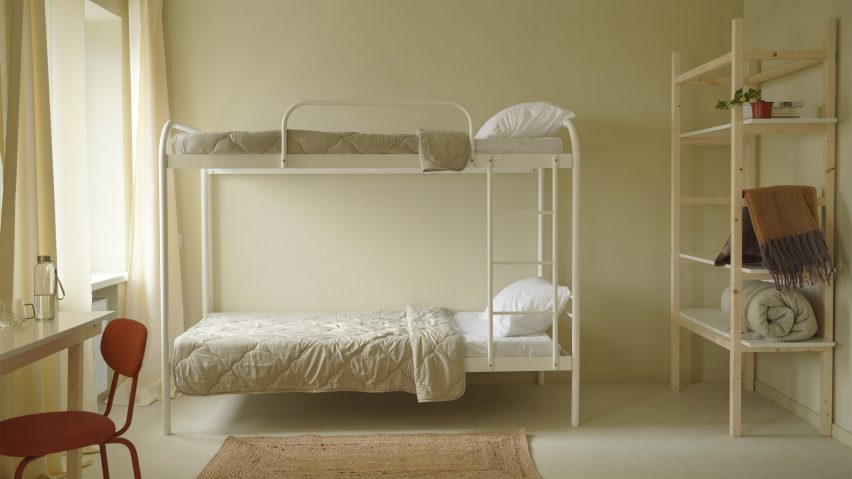
Ukrainian studios "doing what we can, and sometimes what we can't" after two years of war
Two years into Russia's full-scale invasion, architecture and design studios in Ukraine are adapting to support the war effort while also ensuring they stay in business.
Casualties in the war now number around 500,000, including more than 10,000 civilian deaths.
With Saturday marking two years since Russia's troops crossed the Ukraine border, Dezeen spoke to architecture and design studios in the country about how they are coping amid the ongoing conflict.
"Our work is what keeps us going"
"Our studio is continuing to operate, but of course, not at the same pace as before the war and not at such volumes," said Svetlana Pashenko, co-founder of A Pashenko Architects.
"For us, work became not only a way to make ends meet and support our staff financially but a kind of therapy – an opportunity to escape from the realities of war."
In some cases, necessity has proven the mother of invention.
"Today, we are just doing what we can do – and sometimes what we can't do, too," said Anna Dobrova, founder of architecture and urbanism non-profit Metalab.
"We don't like this phrase, but now is indeed a time of great challenges and great opportunities. We are searching for ways to realise them."
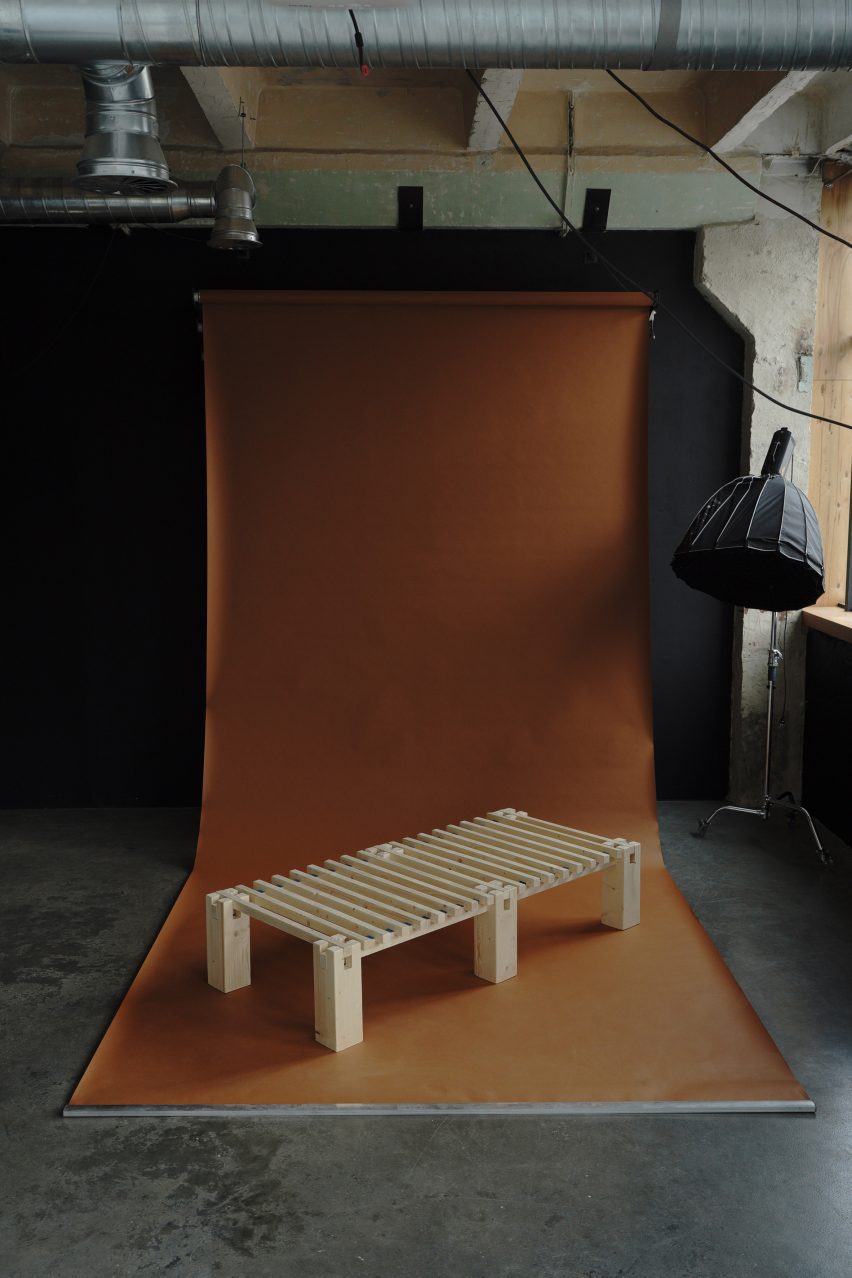
Like many studios in Ukraine, Metalab is now primarily focused on war-related projects.
Through Co-Haty (pictured top), an initiative to renovate and furnish vacant Soviet-era municipal buildings as housing for those whose homes have been destroyed during the war, it has now rehoused some 1,300 people.
Meanwhile, its product-design centre, Pole, has developed a modular wooden bed that can be used in Co-Haty homes and a lamp designed for use in blackouts.
"During the last two years, we have developed a work culture that allows us to adapt constantly to new circumstances and be prepared for several development scenarios," Dobrova told Dezeen.
"Always being flexible and empathetic has become a core principle of our work," she added. "It is a common approach in Ukraine, we'd say."
Being able to quickly change tack like this has become the norm for studios in Ukraine.
"We always find a way and adapt to new circumstances – and our work is what keeps us going," said Balbek Bureau founder Slava Balbek.
"Massive missile attacks and news from the frontline affect our work, but not to a point where it disrupts our projects' concept development or implementation."
"After hitting rock bottom, our team managed to pull through"
Balbek Bureau is continuing to expand its RE: Ukraine Villages project, a digital design tool that supports the restoration of damaged buildings in rural areas, as well as other social initiatives.
In 2023 it also completed MOT, a transportable cultural space constructed from 27 cargo containers that also includes steel elements taken from the destroyed Azovstal works in the south-eastern city of Mariupol.
"After hitting rock bottom in 2022, our team managed to pull through and end 2023 on a promising note," said Balbek.
The studio has also recently started several new projects, split evenly between domestic and international clients in Switzerland, Mexico and Canada.
"It's admirable that Ukrainians keep growing, opening new spaces and starting businesses while also supporting our army," added Balbek. "We are proud to be a part of that and help bring their vision to life."
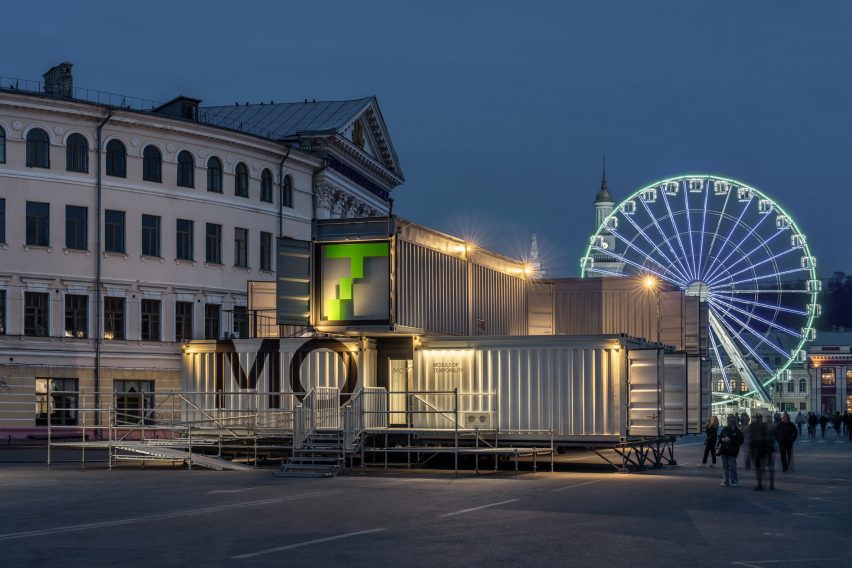
"We are also very appreciative of our foreign clients, who entrust us with their projects no matter the challenges the war brings to our work," he added.
YOD Group, a design studio that specialises in hospitality interiors, has also turned to war-related projects and found opportunities overseas – mostly in the UAE – after reduced investment in new restaurants and hotels in Ukraine.
It turned spent casings from anti-aircraft missiles used by Ukrainian forces into table lamps, donating the proceeds to support soldiers on the frontline.
"Apart from our architectural and interior projects, we pay a lot of attention to volunteering initiatives," explained studio founders Volodymyr Nepiyvoda and Dmytro Bonesco. "Such projects are crucial for us now."
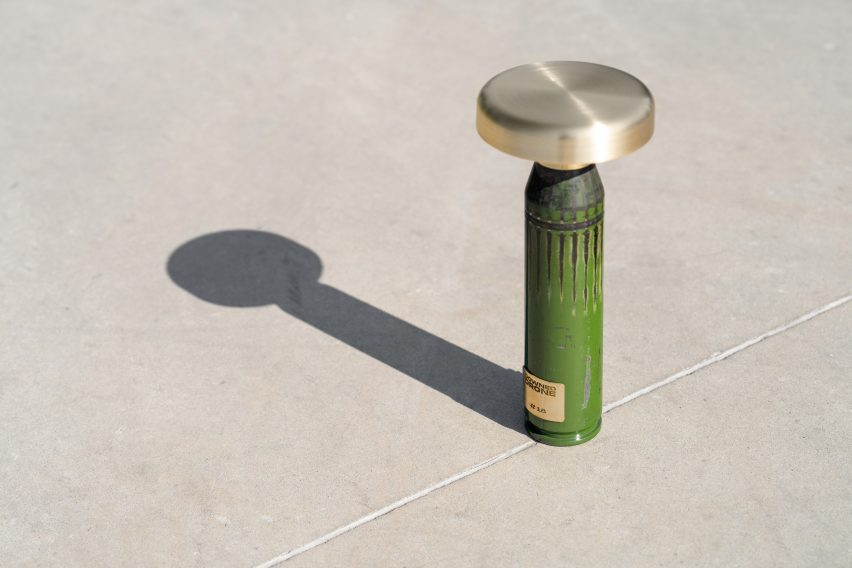
Kyiv-based Bogdanova Bureau, which had to repair its studio after it was damaged in a Russian missile attack in 2022, has similarly adapted its business strategy in response to the war.
At home, it focuses on social projects like the rebuilding of a hospital in Makariv, while abroad it targets commercial residential projects.
"The current situation with the war in Ukraine made us change our strategy," studio founder and chief architect Olga Bogdanova told Dezeen.
The studio has now opened an office in Geneva to coordinate its international projects, which are mostly in Switzerland and France.
Bomb shelters required in every project
Despite their resilience, studios in Ukraine continue to face significant challenges. For instance, budgets for projects within the country are greatly constrained.
"Clients are rationalising and scrutinising budgets much more, going for cheaper design solutions – the economy is not in a great state, and there are much fewer sales than before the war," explained Pashenko.
At the same time, new buildings must also accommodate updated regulations to include defensive capabilities.
"A distinct feature of all the projects we are working on today is the need to integrate a bomb shelter in every project," Pashenko said.
"A lot of work is related to the design of these facilities, adjusting existing projects to the new regulations."
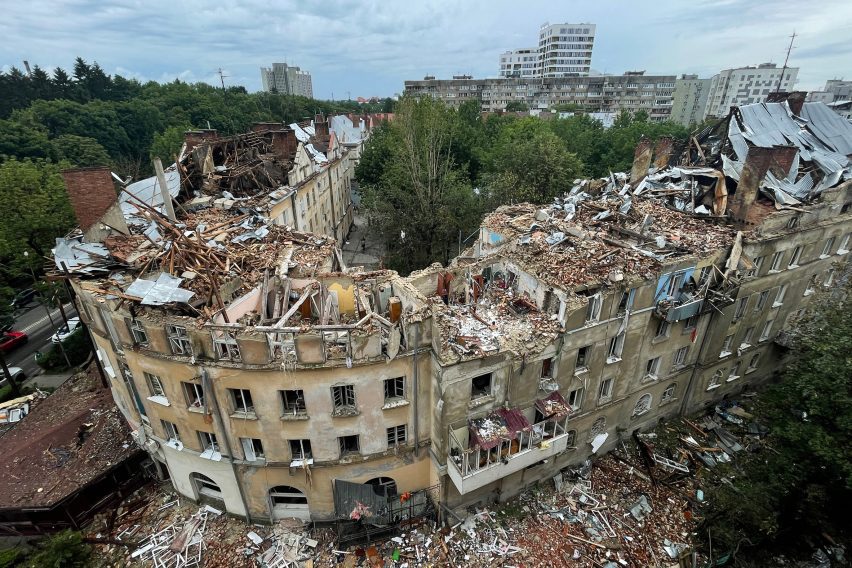
Then there is the impact that ongoing violence, particularly in eastern Ukraine, is having on some projects.
A Pashenko was undertaking design work for the restoration of a destroyed village in the Kharkov region not far from the Russian border.
"But then the work had to be suspended," said Pashenko. "Because the village is still constantly being bombed."
Another challenge is the loss of personnel as people flee the war or are drafted into the army.
"With friends and colleagues serving in the military, we are constantly seeking ways to prepare for changes in team composition," said Dobrova.
"It became more difficult to find qualified staff," echoed Pashenko. "Those guys who stayed with us during the war became almost a family now."
Nevertheless, Bogdanova Bureau, Balbek Bureau and YOD Group all reported that they have been able to remain the same size or grow.
"The core of our team stays with us," said YOD Group's Nepiyvoda and Bonesco. "Some people fled away at the beginning of the war, and a few of them have already come back to Ukraine and joined our team again."
Most of Ukraine's architecture and design studios are reportedly managing to survive and turn out projects – though Balbek Bureau suggested that smaller, residential-focused architecture firms are likely to have struggled.
The real difficulty for architects and designers in Ukraine, however, is dealing with the emotional toll of enduring two years of a bloody war that still has no end in sight.
"As Ukrainians, we feel as distressed as two years ago," said Balbek.
"With Russia continuing its terror, military aid being delayed and global attention shifting to other news pegs, our hopes, plans, and, most importantly, lives, can still be shattered at any given moment."
Dezeen In Depth
If you enjoy reading Dezeen's interviews, opinions and features, subscribe to Dezeen In Depth. Sent on the last Friday of each month, this newsletter provides a single place to read about the design and architecture stories behind the headlines.